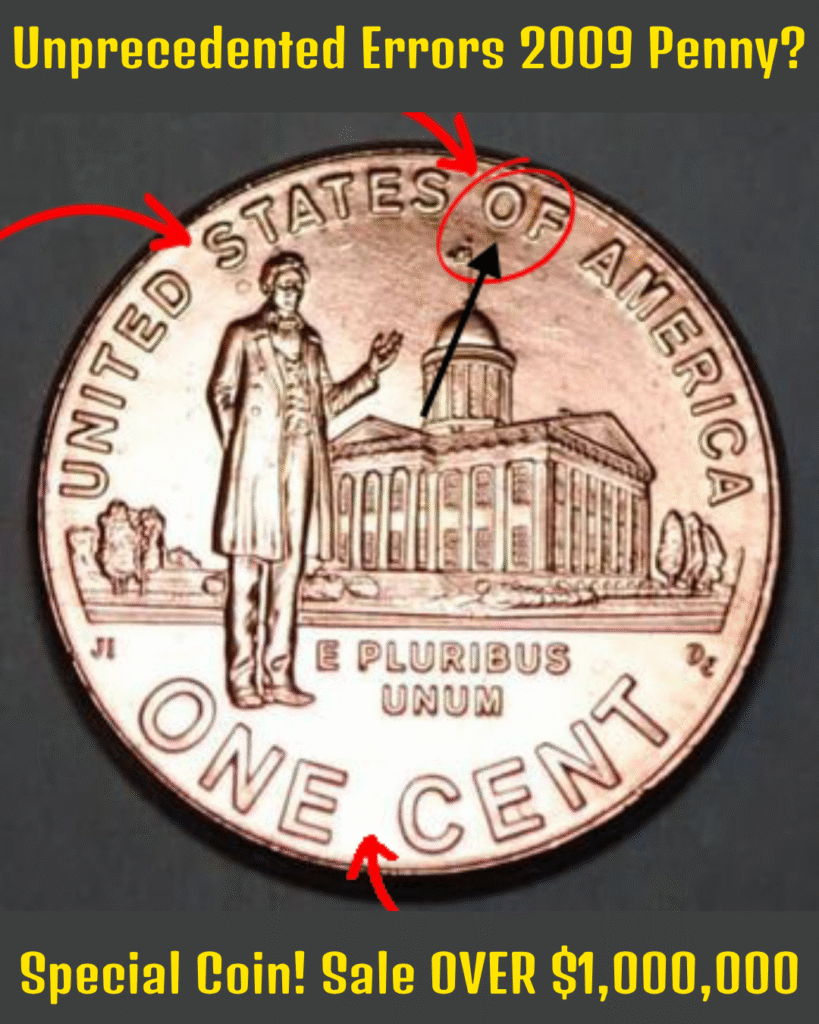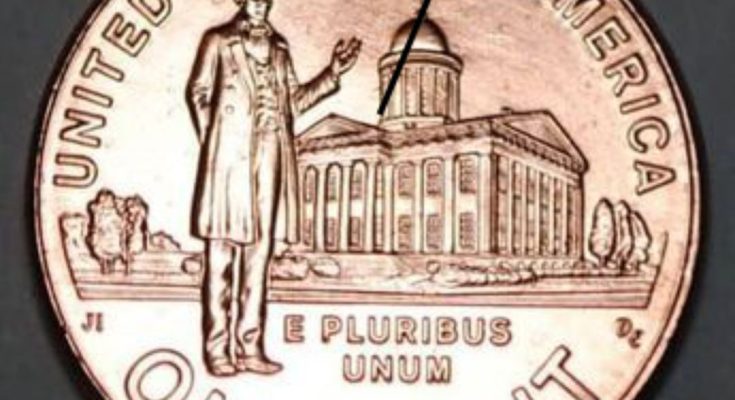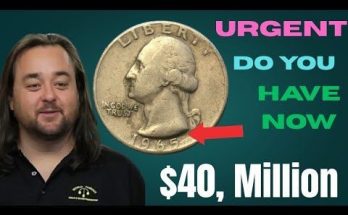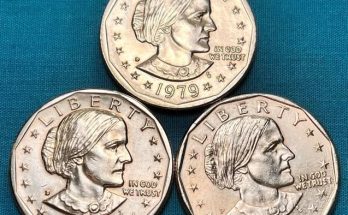
 Why 2009 Pennies Are Worth Looking At
Why 2009 Pennies Are Worth Looking At
- Four different reverse designs (Log Cabin → Formative Years → Professional Life → Presidency) increased production complexity.
- Modern minting is precise, but high volume + many die changes = higher chance of unusual errors.
- Most errors are worth from a few dollars to a few hundred — but a truly unprecedented error on a flawless coin might reach extraordinary sums. (Educational scenario.)
 The High-value Error Types to Hunt For
The High-value Error Types to Hunt For
Below are the error types most likely to attract real collector interest — and in rare, exceptional cases, very high prices.
1) Die Chips & Die Breaks 
What: Small pieces of the die break off; struck coins show raised metal “lumps” where the design shouldn’t be.
Where to look (from your image): Top legend “UNITED STATES OF AMERICA” (near “OF”) and areas of the reverse design.
Typical value: $10 → $100+ for small examples; much higher for huge, dramatic, documented pieces.
2) Doubled Dies (DDO / DDR) 
What: Die received multiple misaligned impressions; letters/graphics show a clearly separate “shadow” image.
Where to check: “LIBERTY,” “IN GOD WE TRUST,” the 2009 date, and reverse design elements.
Typical value: $50 → $500+; dramatic, proof-level doubling in mint state could be far more.
3) Struck-Through / Struck-On Errors 
What: Foreign material (lint, grease, etc.) between die and planchet during strike, leaving irregular impressions or voids.
Typical value: $10 → $200+, dependent on appearance and rarity.
4) Off-Center Strikes & Mules 
What: Planchet misalignment (off-center) or being struck by mismatched dies (extremely rare mule).
Typical value: Off-center values vary widely; true mules or unique mismatches in gem grade can be very valuable.
Heads up: The claim of a $1,000,000+ value is hypothetical — reserved for an incredibly unique error (mule or transitional strike) in top gem condition with impeccable provenance. Most errors do not approach that level.
 How to Inspect Your 2009 Pennies — Step-by-Step
How to Inspect Your 2009 Pennies — Step-by-Step
- Gather all 2009 cents you have (circulation and rolls).
- Identify the reverse design — you must know which of the four you’re looking at.
- Tools: 10x–20x loupe or USB microscope, bright raking light, digital camera for macro shots.
- Inspect legends (especially the top “UNITED STATES OF AMERICA”) for raised lumps (die chips) or doubled letters.
- Check the date and LIBERTY for true doubling — look for a rounded, separated image (not flat “machine doubling”).
- Scan the field and devices for struck-through marks, off-center strikes, or unusual planchet metal flow.
- Photograph obverse, reverse, and close-ups of suspected anomalies.
 Grading & Condition — Why It Matters
Grading & Condition — Why It Matters
- Circulated: Most errors add only modest premiums.
- AU / MS grades: Higher grades (MS-63 → MS-67+) greatly amplify value.
- MS-67+ (Gem) with a unique error and trusted certification could be the scenario that attracts extraordinary offers.
- Never clean the coin — cleaning destroys original surfaces and kills value.
 Authentication & Selling Workflow
Authentication & Selling Workflow
- Do NOT clean or polish. Handle by the edges, use cotton gloves.
- High-res photos: Full obverse/reverse + 3–5 macro views of the error.
- Cross-reference: Check PCGS/NGC image libraries and error-coin references.
- Third-party grading: Submit to PCGS, NGC or ANACS for authentication & encapsulation. Certification unlocks trust and higher sale prices.
- Selling channels: Graded auction houses, specialist error-coin dealers, or certified listings on major marketplaces (with provenance).
 How To Tell Real Errors from Damage or Fakes
How To Tell Real Errors from Damage or Fakes
- True die breaks/chips are raised and follow metal flow lines.
- Post-mint damage/scratches are usually flat or recessed.
- Machine doubling looks flat, shelf-like and lacks the rounded relief of true doubled dies.
- Red flags: evidence of filing, plating, re-engraving, or glued additions — avoid these.
 Market Notes (2024–2025)
Market Notes (2024–2025)
- Collectors prize unique, documented errors, and demand is strongest for certified, well-provenanced examples.
- The modern error market is active online — but certification remains the single biggest value driver.
- While sensational headlines grab attention, actual million-dollar results are extremely rare and require perfect condition + uniqueness.
 Quick Action Checklist (What To Do Right Now)
Quick Action Checklist (What To Do Right Now)
- Grab a loupe and examine all your 2009 pennies (pay attention to the Professional Life reverse from your image).
- Photograph anything suspicious with a macro camera.
- If an error looks dramatic, submit to PCGS/NGC for authentication — but do your homework first.









